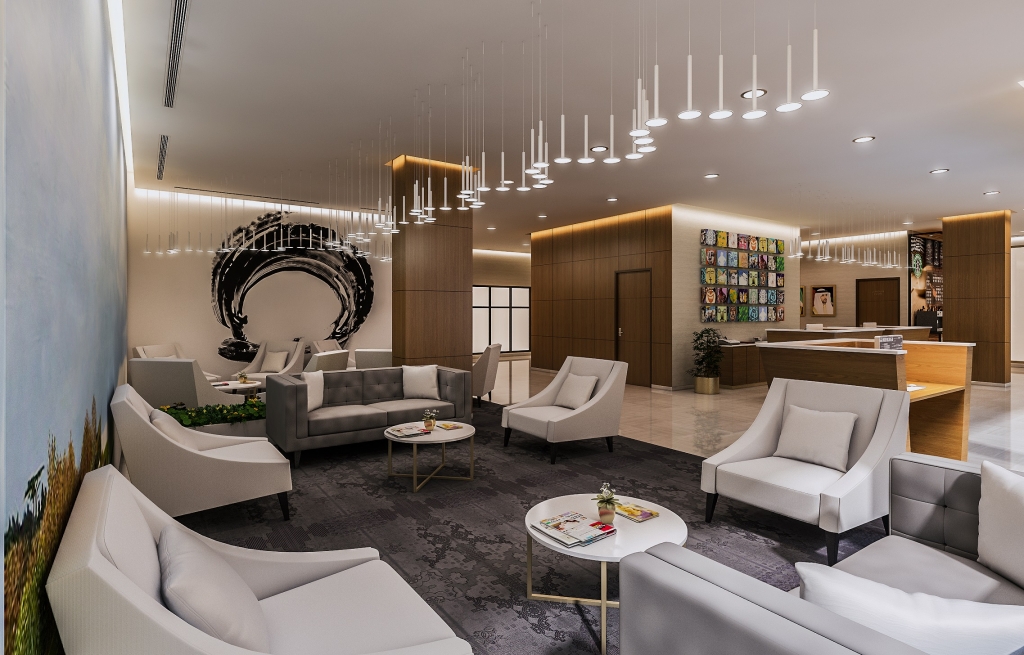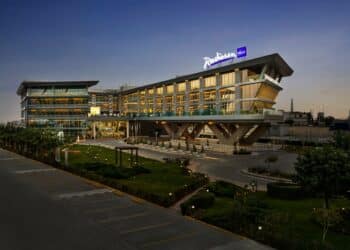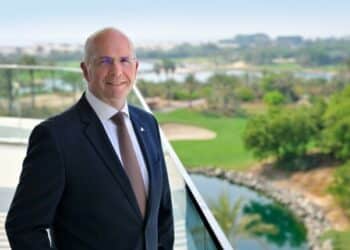Over the last decade, two trends have caused a headache for Dubai’s hoteliers – millennials and the mid-market. On a mission to bring fresh ideas to both, J.S. Anand, founder of Leva Hotels and Resorts, explains how the company will operate 1,500 (profitable) keys by 2022, words by Melanie Mingas…

In the early 2000s, the millennials started to take their first holidays as unaccompanied young adults. Without knowing it, their preferences, demands and requests during these trips would go on to revolutionise hotel operations and the wider hospitality industry.
Combined with significant changes in how, where and why people travel, the accommodation segment today is distinctly different and youth travel is no longer about large friendship groups enjoying a two-week party overseas. Today, youth travel embraces history, architecture, cultural experience, adventure tourism and extreme sport.
As a travel group, those currently aged 18- 34 spend almost $200 billion a year globally, and by 2020, 320 million international trips will be made by youth travellers each year, up 47% from 2013.
The hotel industry has been quick – and keen – to react, with such gimmicks as interactive touch points, iPad controlled curtains and even robotic butlers. The idea of informal service on demand redefined luxury and millennials duly arrived.
At this point, millennials were widely considered an operator concern, with the onus to update rooms and offerings placed firmly on the name over the door. However, today a new name is allowing owners the chance to embrace and entice the millennial market, with fresh, made to measure brands.
Leva Hotels and Resorts is the brainchild of JS Anand, a Dubai-based hotelier who has worked for Marriott International, InterContinental, Hilton Hotels and Resorts and Louvre Hotels Group over a 20-year career.
While inspired by the success stories of such mid-market brands as Rove, Leva is one of the first companies to have brought a comprehensive millennial proposition to Dubai’s hotel owners, D’Zign by Leva. The aim is to target the young, modern traveller as the core clientele across all operations.
Anand explains: “D’Zign focuses on the millennial traveller, through design and tech. We see lifestyle brands going more towards social spaces, casual dining, tech-savvy lobbies, communal tables, coffee shops, places to hang out. The model we came up with is largely a low cost model for owners to build a product for this market.”
As a company Leva offers 3-star and 4-star options in addition to upscale hotels and an extended stay component, across four brands (see box). To achieve maximum ROI for investors and minimum rates for guests, diligent focus falls on efficient and cost effective operations.
The key differentiators of a Leva hotel are the prioritisation of comfort, service and affordability. Derived from the Latin “levatio”, which, among many things, means comfort, Leva is described as a “confluence of great hospitality and aesthetics”.
As a rule of thumb, all properties are located near major landmarks with locations selected for proximity and connection. Anand is working towards 1,500 keys across 10 properties within five years.
Behind the scenes, Leva has streamlined vendor policy to ensure stability in operations, and it blends technology and smart financial systems to ensure ROI for investors. For example, the first Leva property is also the first hotel in Dubai to implement Oasis, the PMS software adopted by Dusit and Holiday Inn Express across the South East Asian market.
Additionally, Anand names outsourcing and a lean staffing structure as the secret to profitability under the group’s model.
He continues: “We are a global team. We have worked with economy and full-scale brands but the luxury 5-star and 4-star properties are very top heavy in cost. That’s how we came up with the outsourcing models and lean staffing models of Leva. Not by minimising the quality, but minimising the need for a large quantity of products, such as amenities, and so on.”
The mid-market formula
According to PwC, the key to a great mid-market hotel is a well connected location, clean rooms, good (and free) WIFI, and tech-enabled communication between hotel and guest.
 At Leva, these factors combine under the lifestyle umbrella with a fresh aesthetic and functional technology. While a seemingly simple combination, Anand maintains it’s a winning formula.
At Leva, these factors combine under the lifestyle umbrella with a fresh aesthetic and functional technology. While a seemingly simple combination, Anand maintains it’s a winning formula.
He says: “It’s more to do with the lifestyle concept, focusing on modern art and technology and very strongly on returns for ownership compared to what currently exists. One thing we pride ourselves on is that we commit and we deliver. There is a lot of commitment in Dubai, but also a lot of under delivery.”
Despite this, Leva’s approach isn’t prescribed.
He adds: “We deliver what we promise and one more flexibility we have is that we go to owners and work with their current models. We don’t’ give them a book and say ‘this is your design, follow it’. We take their design and modified it as per their requirement and Leva’s requirement.
“Offering more services in a 3-star product is the way to go,” he continues.
Adding to PwC’s list, Anand’s ideal mid-market hotel features a maximum of 150 keys and a combination of bar, coffee shop and all-day dining, depending on the target guest. It also embraces dining trends from its host city – which, in this case happen to scream millennial.
Anand says: “In F&B today there is a lot of innovation. You tend not to run the F&B product yourself, you lease or share it, you try new concepts and so on. I feel today, the consumer isn’t looking for fine dining and we see this in the presence of restaurants like Tom and Serge, Pantry Café and so on. Price points have to be very competitive, because traditionally hotel F&B always suffers.”
“When it comes to hotel models we think ‘maximise every square foot’. We have great public spaces but you need to have commercial concepts and a good quality product in terms of rooms.”
The start of an era
The millennial market is more nuanced than privileged young people on their latest international trip and, as with other segments, rate inevitably shapes demand.
In Dubai, the hotel industry was created to entertain levels of affluence unimaginable to most people. A legacy of its drive to impress the world, today it boasts the world’s tallest hotel, the world’s most luxurious hotel, some of the world’s most expensive hotels… not to mention the most hotels under construction in the entire region.
As a business model it would always be limited, but the shift didn’t start until 2013. Eyeing an increase on arrival numbers in excess of 100%, Dubai Tourism committed to make Dubai a place everybody can afford to enjoy.
Mid-market airlift received a boost with the expansion of flyDubai and the launch of Hungarian economy airline, Wizz Air, at Dubai South. The same year, DTCM pledged to waive taxes for budget hotels meeting certain criteria and, by Q4 2015, the 3-star and lower segment accounted for 50% of supply, compared to 29% of the total pipeline in Q1 of the same year.
Anand explains: “Of course there was a need, no doubt about it, but at the same time, I felt there was enough luxury and enough loud, glamorous product. When we looked at all our findings and research, I felt strongly that you really don’t need a large luxury product to be successful. The bottom line for us is that we try to work with very sharp and timed cost models.
“The idea of tighter cost models, outsourcing, that excites me. There was a need for mid-scale and still we do not see enough of it in Dubai, but that’s how Leva came about,” he continues.
By the end of 2017, Dubai had 46,620 available rooms in the 4-star and lower segment, representing 44% of the total hotel stock in the emirate and boasting an average occupancy of 78%. In the luxury market, 35,702 rooms averaged 75% occupancy.
In addition to driving arrivals, the mid-market also presents opportunities for different source markets – as Anand observes, Indian and Chinese arrivals are rising, but they rarely generate the same rates as European or American visitors.
Anand adds: “The Dubai market has a lot to offer and it is a very accessible city. The theme parks, Dubai Frame, Dubai Opera, IMG Worlds of Adventure… essentially it’s probably going in the direction of Singapore and creating a lot of things within the city, mixed with a little culture.”
The first Leva property, D’Zign by Leva, opposite Al Ghurair Centre, opens this quarter. It will be followed by a second property in Barsha and further locations currently being scouted across the Expo suburbs of Al Furjan, Arjan and Marjan, in addition to sites in International City.
Looking ahead, Anand concludes: “Because of 2020 and 50,000 or 60,000 rooms coming into the market, I think there will be a price war and an occupancy battle. I think 2020 is a great opportunity, but what happens after that will depend on how different source markets change and how we drive traffic into the city. For Leva, it isn’t about having 20 locations in Dubai it’s about the new locations – the places where we want to position.”



































































